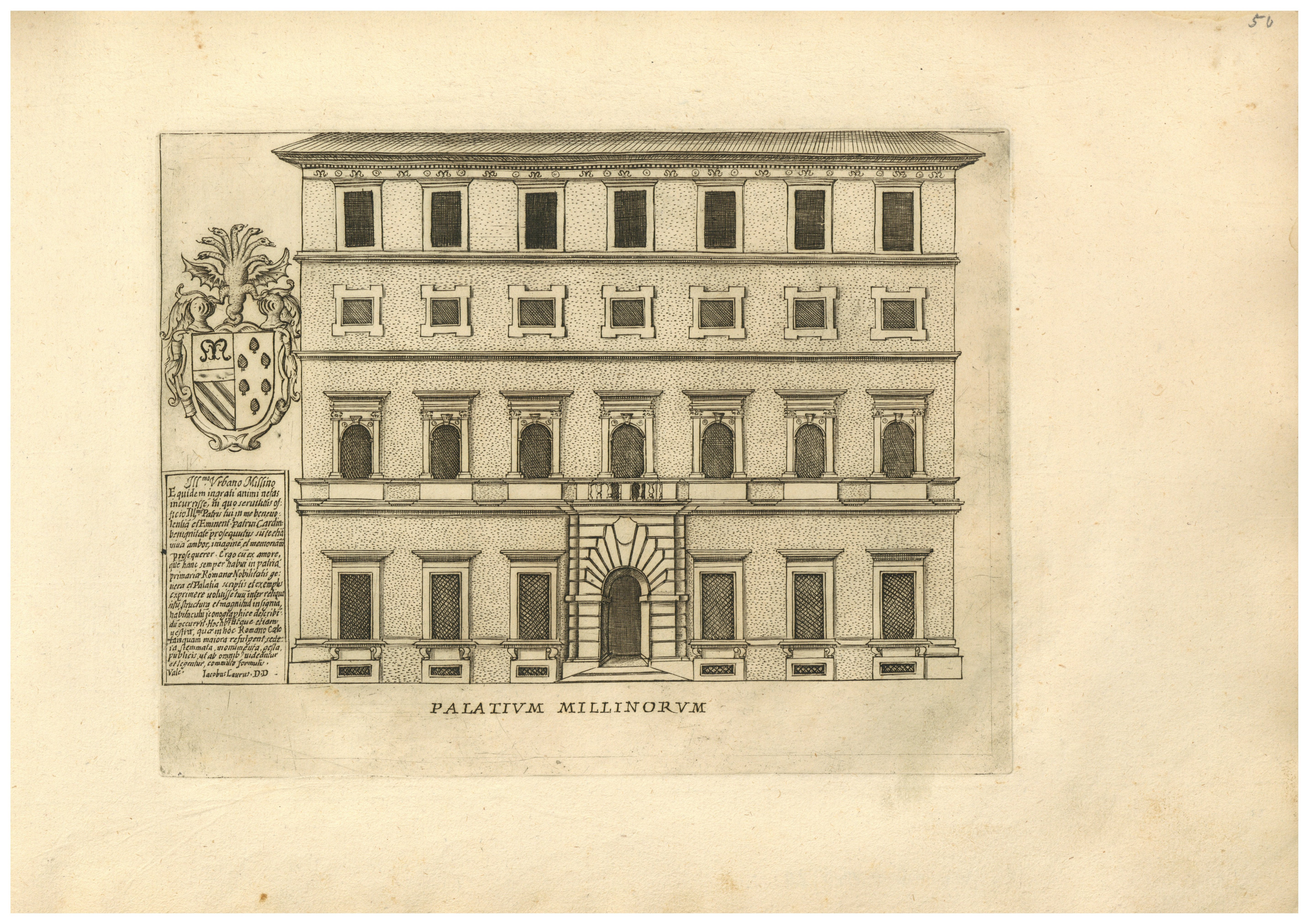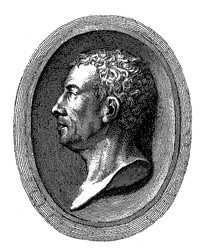Dargestellt ist ein viergeschossiges Gebäude. Das untere Geschoss weist mittig ein Hauptportal auf, das mit Quader- und Strahlenschmuck verziert ist. Flankiert wird es auf jeder Seite von drei Fenstern. Im zweiten Geschoss befindet sich direkt über dem Hauptportal ein Fenster mit einem Balkon, dieses wird auch auf jeder Seite von drei weiteren Fenstern gerahmt. Die Fenster sind mit einem Überbau verziert.
Oberhalb dieser Zone befindet sich ein drittes Geschoss mit kleineren, quadratischen Fenstern. In der obersten Zone sind noch einmal sieben Fenster zu sehen.
Neben dem Gebäude befindet sich ein Textfeld in lateinischer Schrift. Über diesem befindet sich ein Wappen.
Das Blatt gehört zu Giambattista de Rossi in Piazza Nauona con icenza delli Superiori.
Bez.: u.m.: Palatium Millinorum
en









